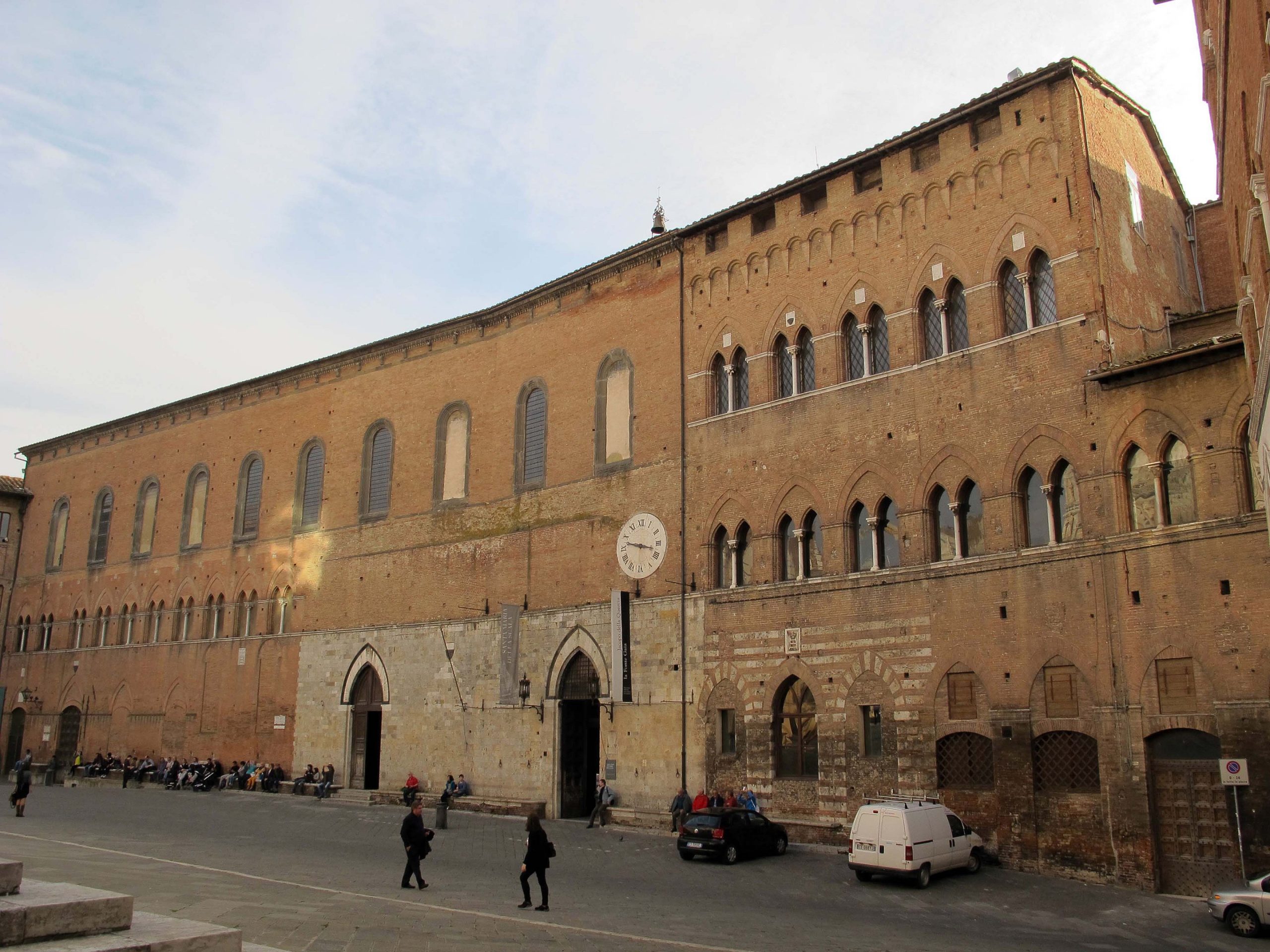Between naturalism and real life, between dream and reality: walking through the Santa Maria della Scala museum will take you into a special world where the art and history of one of Europe’s oldest hospitals are brought to light.
Located along via della Francigena in Siena, Santa Maria della Scala used to be the hospital for abandoned children and pilgrims. Now it takes its place beside the Cathedral and the Dome as one of the most visited attractions of the Tuscan town.
What we know today about this artistic treasure is a mixture of legend and history: according to a medieval myth, the founder was a cobbler named Sorore who built this place in order to welcome pilgrims. While he died in 898, the first document mentioning the hospital dates back to 1090, so it was surely built earlier than that.
Local noble families helped to fund the hospital and to make it a crucial part of the Republic’s economy. As donations and bequests increased between the 13th and the 14th centuries, its activities developed and started to include agricultural properties and granaries. Hospital landholdings in the surrounding area, from Val d’Orcia to Val d’Arbia, from Massa and Maremma, became larger and larger.
These were named “Grancia” or Grange, reflective of their size and importance in the Siena state. The hospital’s weight in the local economy was untouched at least until the 18th century. The property was first controlled by the friars, then came under Municipal authority, and became a model whose management and organization inspired other noble families, such as the Duke of Milan.
Along with its economic importance, the hospital had a cultural role in the Renaissance, once the complex was enriched with majestic art and architecture. Close ties with the most influential people of the Sienese Republic was an important factor in the hospital’s growing wealth of frescoes and wall paintings.
The first decoration was commissioned by Giovanni di Francesco Buzzicchelli, the rector from 1434 to 1444: the vaults were painted between 1437 and 1441 by Gualtiero di Giovanni, Agostino di Marsiglio, and Adamo di Maestro Collino. The wall decorations were begun shortly afterwards and completed in October 1444. The beauty of these frescoes is mainly related to the unusual scenes represented: the activities in the hospital, both charitable and medical, are associated with naturalism and religious characters.
The most prestigious example of Sienese art is represented by the Pellegrinaio (pilgrims’ hospice), built in the second half of the 14th century but decorated a century later. Unfortunately not all the frescoes have been preserved: a famous fresco cycle with Histories of the Virgin, on the façade, by Simone Martini, Ambrogio and Pietro Lorenzetti (1335) is now lost.
Still preserved are The Stories of the Hospital in the Pellegrinaio Hall, by Domenico di Bartolo, Lorenzo Vecchietta and Priamo della Quercia, the old sacristy (also decorated by Vecchietta); the Manto Chapel, with a lunette by Domenico Beccafumi, the 15th century Fonte Gaia by Jacopo della Quercia, and the decoration of the large apse by Sebastiano Conca (late 18th century).
The architectural changes and the building’s long use as an infirmary also affected the frescoes’ condition: others in the original five bays are lost or seriously damaged. The 6th bay, added in 1577, was decorated by Raffaele Navesi with Wet Nurses receiving Infants (west wall) and Pietro di Achille Crogi: Distributing Grain to the Poor (east wall).
Nowadays, Santa Maria della Scala is no longer in use as a hospital and the first plan to restore the old building was given to a group of Sienese architects. Awareness of the importance of the architectural and cultural restoration of Santa Maria della Scala grew in the 1980s, until the project was finally endorsed by the City.
The first visitor programs opened in 1995, and allowed access to the most significant parts of the museum. The City Council has been recovering the old complex and has turned it into one of the greatest Sienese art collections. New areas have been restored and opened to the public, such as the medieval hayloft with the restoration workshop of Jacopo della Quercia’s Fonte Gaia, the evocative hall of the Company of Saint Catherine of the Night, the new Archaeological Museum, as well as the new exhibition spaces of Palazzo Squarcialupi.
Visiting Santa Maria della Scala is today a unique experience, enriched with significance through initiatives and projects that characterize the old Ospedale Grande and have become a reference for European culture and art and a means of preserving its cultural heritage.




























